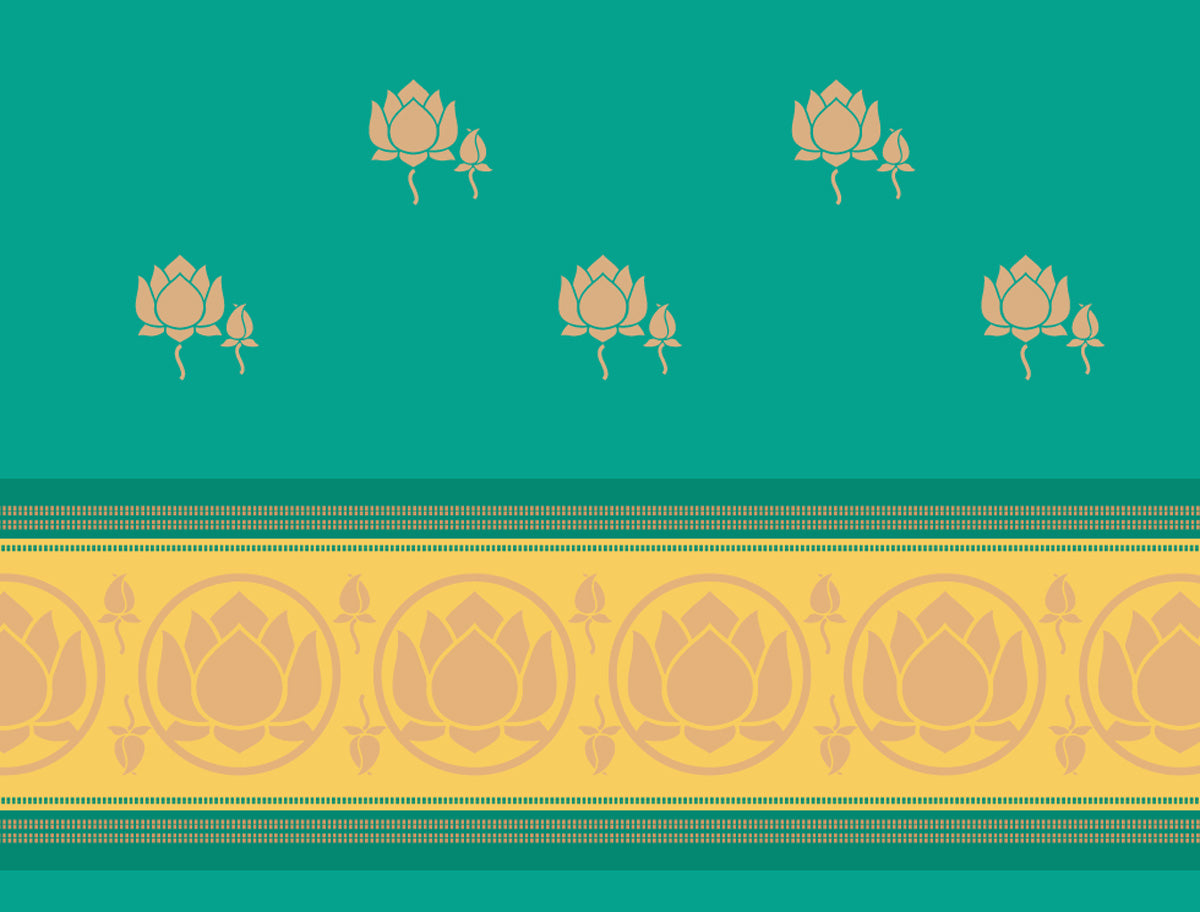
The Lotus Blooms

The lotus is a recurring motif in Indian textiles. In embroideries, it embraces the cloth as each stitch moves in and out of the cloth strengthening its hold; in prints, it takes the various textures of the cloth it is printed on; and when woven into the fabric, it effortlessly becomes one with the fabric. At times with open petals, at times a closed bud, the form of the lotus itself conveys a lyrical impression. At times it is used to symbolize the philosophy of Indian mythology of different religions, at times for the concept of bringing good luck and prosperity, and at times for its beauty.
Lotus in mythology
In Indian mythology, the lotus is a seat for many goddesses. It is an icon in the hands of a number of gods. Goddess Lakshmi is seated on a lotus and holding lotus flowers in her hands along with a pot of grain, and gold coins – a symbol of wealth and prosperity. The goddess is often referred to as Padma or Kamala, both meaning lotus.

Lord Vishnu is shown with an eight-petalled lotus springing from his naval; the protector upon which the creator Brahma is seated. The lotus, with each of the petals representing earth, fire, air, mind, intellect, and ego, represents the universe. Vishnu is also depicted holding a lotus in one of his four hands.
Lord Krishna's feet are compared with lotus. Shiva’s consort Parvati, Surya the Sun god, the Bodhisattva Padmapani are all gods holding a lotus in their hands. Ganga and Yamuna too hold a stemmed lotus with a long stalk.
Meanings of the lotus flower
The lotus motif symbolizes the power of life – the union of earth, water, and sky; its open and closed petals indicate the ups and downs of life and the multiplicity of the universe.

Various forms of lotus motif: Astadal Padma – eight-petal and Satadal Padma – hundred-petal, the flower is also associated with the sun for the opening and closing of the petals. It is often associated to positive meanings - as a flower of hope or grit, one that has the ability to bloom in muck and dirt, one that blooms with the sun, a symbol of new beginnings, and one that spreads sweet fragrances.
Inspirations for textiles
Whether the Kantha of Bengal or Phulkari of Punjab, Picchvais of Nathdwara or Ikats and Paithani, the Chamba rumaal of Himachal Pradesh or Kanjeevarams of Kanchipuram, the lotus is depicted in myriad forms, styles and colours, carrying as many meanings.

Whereas in certain textiles, the inspiration to use the lotus motif is religious, in others it is spiritual and yet others, merely aesthetic. In sarees, the motif is seen as buttis, in the pallus or borders, too. The lotus is often seen embroidered in the corners of rumaals, in soft pink, white or purple, as in the corners of dupattas.
The lotus motif graces the Banarasi brocades, bead embroideries, and Rajasthani block prints too. It is not uncommon to see the lotus on Kashmiri shawls or Sambalpuri sheets. Sarees, dupattas, salwar kurtas, skirts and blouses, the lotus becomes a part of each and every Indian garment with ease and beauty.
Resources: http://bieap.gov.in/Pdf/FGMPaperIIYR2.pdf
